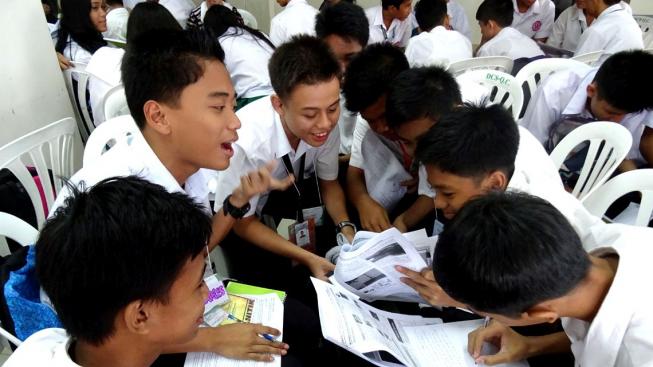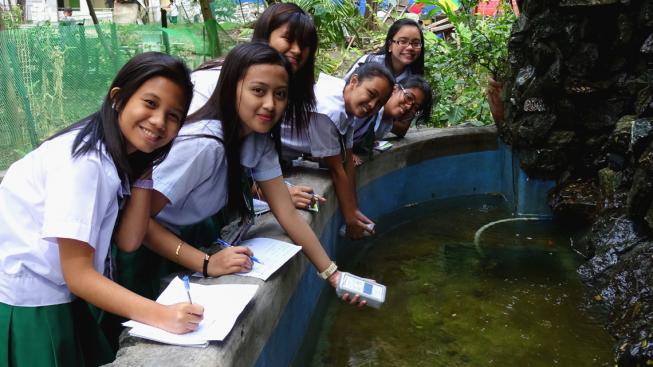This article was published in the International Atomic Energy Agency (IAEA) Website on May 12, 2016

Students from the Philippines participate in group discussions.

Students in the Philippines measure natural radiation using the ‘Hakaru-Kun’ instrument, a handy‐type survey‐metre developed for education purposes.
IAEA Invites Students to Learn Nuclear Science Through Play
By Laura Gil, IAEA Office of Public Information and Communication
Teachers have reached almost 10 000 students in four Asian countries through a guidebook designed to bring nuclear science and technology closer to young adults. The compendium, which is being tested by the IAEA and education experts from several countries, collects unique teaching strategies and materials to introduce science and technology in education systems.
Once final, the compendium will be available for interested policy-makers and middle and secondary school teachers across the region. It has been tested in four pilot countries: Indonesia, Malaysia, the Philippines and the United Arab Emirates, and the IAEA plans on testing it in more countries, including Jordan, Sri Lanka and Thailand, at their request. It was developed with technical inputs from Australia, Finland, India, Israel, Japan, the Republic of Korea, the United Kingdom and the USA.
“We want to challenge students’ curiosity and show them the important role nuclear science and technology play in everyday life,” said Maria Violeta Tupas, Education Programme Supervisor at the Department of Education in the Philippines, who has used the compendium. “And we want to do this during the students’ formative years, so that they realize what it is that motivates them before they choose their career path.”
By generating interest in science among young generations, the compendium aims at contributing to the sustainability of the nuclear industry and related technologies in the future. With populations growing, applications of nuclear technology rapidly expanding, and active nuclear scientists ageing, a new generation of professionals will soon need to step up.
Read the rest of the article at the IAEA Website












































